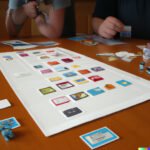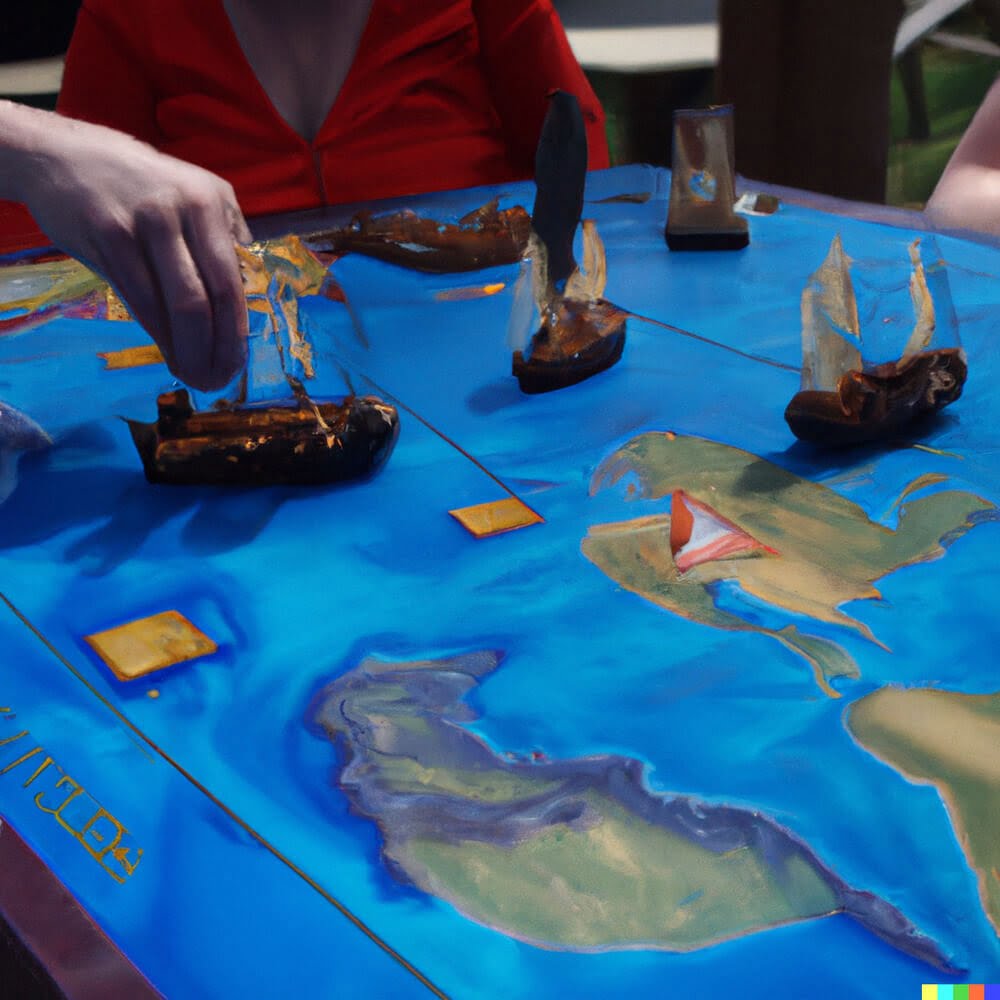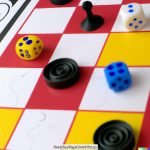The nostalgic charm of classic kid board games continues to captivate children and adults alike, even in the digital age. These timeless games provide a break from screens and technology, offering hours of fun, laughter, and learning opportunities. In this article, we will explore the enduring appeal of classic kid board games, discussing their benefits and why they continue to be a hit today.
Despite the rise of video games and online entertainment, classic kid board games have maintained their popularity for a variety of reasons. These games offer a tangible experience that allows players to physically interact with each other and the game board. This not only fosters social connections but also promotes face-to-face communication, teamwork, and critical thinking skills.
In addition to providing an opportunity for offline play, classic kid board games also offer educational benefits. Many of these games incorporate elements of strategy, problem-solving, counting, spelling, or creative thinking. By engaging in gameplay, children can enhance their cognitive abilities while having fun.
As we navigate through the digital era where screens dominate our daily lives, it is important to remember the cherished pastime of gathering around a board game with family or friends. Classic kid board games remain as popular as ever because they provide not only entertainment but also valuable life lessons and shared experiences. Let’s delve into some of these beloved games and discover why they have stood the test of time.
The Everlasting Charm
Monopoly is a classic kid board game that has stood the test of time, captivating players for decades. With its rich history and enduring popularity, Monopoly continues to charm both children and adults alike. The game not only provides hours of entertainment but also offers valuable educational and strategic benefits.
First introduced in 1935, Monopoly quickly became a household name and has since been translated into numerous languages and adapted into various editions. Its appeal lies in the combination of luck and strategy required to succeed. Players must make strategic decisions about buying properties, negotiating deals, and managing their money. This aspect of the game helps develop critical thinking skills, as players must weigh the risks and rewards of their choices.
To increase your chances of winning at Monopoly, it can be helpful to employ certain tips and tricks. One key strategy is to focus on acquiring complete color sets rather than individual properties. Building houses and hotels on these sets will increase your rental income significantly and put you at an advantage over opponents. Additionally, being mindful of the “go to jail” space can help you avoid landing on other players’ expensive properties.
Monopoly is not just a game of chance; it also teaches important life lessons about economics, negotiation, patience, and financial management. These skills are especially relevant in today’s digital age where children are often immersed in screen-based activities. By playing Monopoly, kids can develop a better understanding of money management concepts while engaging in face-to-face interactions with friends or family members.
Whether you’re a seasoned Monopoly enthusiast or playing for the first time, this timeless board game continues to provide endless fun and valuable lessons for kids of all ages. So gather around the table, roll the dice, and let the wheeling-and-dealing begin.
The Quick-Thinking Fun
Scrabble is an iconic wordplay game that transcends generations with its quick-thinking and engaging gameplay. It has remained a classic kid board game due to its lasting appeal and educational value. Whether it’s played by children just beginning to explore the world of words or adults looking for a challenging brain workout, Scrabble offers endless opportunities for fun and learning.
One of the key benefits of playing Scrabble is its impact on vocabulary development. By forming words using letter tiles, players get to expand their knowledge of words and improve their spelling skills.
The game encourages players to think critically and strategically as they search for high-scoring words while managing their resources effectively. As players challenge themselves to come up with longer and more complex words, they not only enhance their language skills but also boost their confidence in expressing themselves verbally.
To help young Scrabble enthusiasts make the most out of their gameplay, here are a few helpful strategies. First, it’s important to familiarize oneself with two-letter word combinations as they can be useful for creating new words or utilizing existing ones already on the board.
Additionally, using prefixes and suffixes can often lead to higher-scoring plays by extending existing words. Lastly, paying attention to both vowels and consonants can ensure a better balance of letters for future turns.
For aspiring Scrabble champions, there are also plenty of resources available online such as word finder tools, official lists of valid words, and practice games against AI opponents. These resources can help players hone their skills and discover new strategies to improve their gameplay. Whether it’s a casual family gathering or a competitive tournament, Scrabble continues to provide quick-thinking fun for all ages.
| Benefits | Tips | Resources |
|---|---|---|
| – Expands vocabulary | – Familiarize with two-letter words | – Word finder tools |
| – Improves spelling skills | – Use prefixes and suffixes for higher-scoring plays | – Official lists of valid words |
| – Enhances critical thinking and strategic planning | – Pay attention to vowels and consonants for better balance | – Practice games against AI opponents |
Nostalgic Delight
Connect Four is a classic kid board game that has provided countless hours of fun and entertainment for both children and adults alike. The game, which was first released in 1974 by Milton Bradley (now known as Hasbro), has withstood the test of time and remains a beloved family favorite.
The concept of Connect Four is deceptively simple: players take turns dropping colored discs into a grid, aiming to be the first to connect four of their own discs in a row, either horizontally, vertically, or diagonally. Despite its simplicity, the game offers a surprising level of strategic depth and critical thinking that appeals to players of all ages.
Playing Connect Four helps develop important cognitive skills such as logical reasoning, problem-solving, and planning ahead. By considering different possible moves and anticipating their opponent’s next move, players learn to think strategically and make calculated decisions. Additionally, Connect Four encourages spatial awareness as players must visually analyze the game grid to spot potential winning combinations.
To keep the game fresh and exciting, there are variations and twists that can be added to Connect Four. For example, some players introduce a timer for each turn or implement rules that require players to “reverse” the move made by their opponent on the previous turn. These variations add an extra layer of challenge and excitement to the game while keeping it interesting for frequent players.
In summary, Connect Four remains a nostalgic delight for many because it combines simple gameplay with strategic thinking. Its enduring popularity speaks to its timeless appeal across generations. Whether playing with friends or family members, Connect Four never fails to provide hours of engaging fun while stimulating critical thinking skills in an enjoyable manner.
| Benefit | Description |
|---|---|
| Cognitive Development | Develops logical reasoning, problem-solving skills, and spatial awareness. |
| Strategic Thinking | Encourages players to think ahead and make calculated decisions. |
| Variations and Twists | Keep the game fresh and exciting with different rules and challenges. |
Creative and Imaginative
Pictionary is a classic kid board game that combines creativity, imagination, and teamwork. It provides hours of fun as players try to convey words or phrases through drawings. This game has stood the test of time and continues to be a favorite among children and adults alike.
One of the key benefits of Pictionary is its ability to foster communication skills. As players take turns drawing and guessing, they must find ways to effectively convey their ideas without using any words. This encourages players to think creatively and use visual cues to express their thoughts. Additionally, Pictionary promotes teamwork as players work together in teams to achieve a common goal.
To enhance gameplay and make it more interesting, you can introduce different themes for your Pictionary sessions. For example, you could have a “food” theme where all the words are related to different types of food. This adds an extra element of challenge and keeps the game fresh.
There are also various ways to enhance the gameplay experience with additional twists or variations. One popular variation is “Reverse Pictionary”, where instead of one person drawing while others guess, everyone in the team takes turns drawing as their teammates try to guess the word or phrase correctly. Another variation is “Speed Pictionary”, where teams compete against each other to see who can guess correctly in the shortest amount of time.
Classic Challenges
Chess and checkers are two classic board games that have stood the test of time. These games have been enjoyed by generations for their intellectual challenges and tactical gameplay. Whether you’re a beginner or a seasoned player, chess and checkers provide endless opportunities for strategic thinking and mental agility.
The Mental Benefits of Chess and Checkers
One of the main reasons why chess and checkers are considered classic challenges is because they offer numerous mental benefits. Both games require players to think several moves ahead, anticipate their opponent’s strategies, and make calculated decisions. This level of critical thinking promotes problem-solving skills, logical reasoning, and concentration.
For children, playing chess or checkers can significantly improve their cognitive abilities. Research has shown that these games enhance memory function, spatial awareness, and pattern recognition. Additionally, chess has been linked to improved math skills and creativity due to its complex rules and open-ended possibilities. By engaging in these intellectually stimulating games, kids can sharpen their minds while having fun at the same time.
Learning Chess and Checkers
While chess may seem daunting with its intricate pieces and countless strategies, learning the game is a rewarding experience that can be broken down into manageable steps. Beginners can start by understanding the basic movements of each piece on the board. From there, they can learn various tactics such as controlling the center of the board, protecting their pieces, and setting up traps for their opponents.
Checkers, on the other hand, is relatively easier to grasp compared to chess. The objective is simple: capture all your opponent’s pieces or block them from making any more moves. Understanding how different pieces move across the board is essential in developing effective strategies to outmaneuver your opponent.
Both chess and checkers have abundant resources available online for players of all levels. Online tutorials, videos, puzzles, and even AI-powered opponents can provide valuable practice opportunities for honing skills and testing strategies.
By embracing the challenges of chess and checkers, players can cultivate critical thinking abilities, enhance their mental dexterity, and enjoy hours of enjoyable gameplay. These classic games offer an escape from the digital world and provide a platform for face-to-face interaction, fostering connections and creating lasting memories. So, dust off that old chessboard or grab a checkerboard and invite a friend or family member to join in on these timeless challenges.
Cooperative Adventure
Explore the journey of The Game of Life and its enduring popularity
The Game of Life has been a staple in many households for decades, captivating players with its unique blend of strategy and chance. This classic board game takes players on a virtual journey through life, from college and career choices to marriage, family, and retirement. First introduced in the 1860s as “The Checkered Game of Life,” this game has evolved over time to reflect the changing values and aspirations of society.
One of the reasons for The Game of Life’s enduring popularity is its relatability. The game allows players to make choices that mirror real-life decisions, such as pursuing education or choosing a career path. These elements make the game engaging and relatable for players of all ages. Moreover, The Game of Life offers an escape from daily routines by allowing individuals to dream big and experience various life scenarios within the confines of a board.
Discuss the various life lessons and decision-making aspects of the game
Beyond its entertainment value, The Game of Life offers numerous opportunities for learning important life lessons. As players navigate through different stages of life, they encounter obstacles, unexpected events, and difficult decisions. These experiences teach valuable skills such as problem-solving, critical thinking, financial literacy, risk assessment, and even rudimentary knowledge about home buying or insurance.
Additionally, The Game of Life emphasizes the importance of decision-making and consequences. Each choice a player makes influences their future outcomes in terms of finances, relationships, and overall happiness. By experiencing these consequences within a safe play environment, children can develop decision-making skills without the fear or high stakes associated with real-life situations.
Share anecdotes and strategies for a memorable game session
To make your next session of The Game of Life more memorable, consider incorporating some additional elements to enhance gameplay. One idea is to encourage storytelling during the game, allowing players to share their character’s life journey and envision the details of their experiences. This storytelling aspect adds a narrative layer to the game and enhances the imagination and creativity of the players.
Another suggestion is to create unique challenges or goals for each player as they progress through the game. For example, you could assign a specific occupation or scenario that players need to achieve in order to win. This adds an extra layer of excitement and competitiveness while also encouraging strategic thinking and problem-solving skills.
Lastly, like many classic board games, The Game of Life offers an opportunity for social interaction and bonding with family and friends. Encourage players to engage in discussions about their strategies, choices, and aspirations during the game. These conversations can lead to deeper connections and understanding among players while also fostering teamwork skills.
Timeless Laughter
Candy Land is a beloved classic kid board game that has been bringing laughter and joy to children for generations. This whimsical game takes players on a colorful adventure through the Candy Land kingdom, where they encounter sweet characters and delicious treats along the way.
One of the key benefits of Candy Land is its ability to enhance color recognition and counting skills in young children. As players move their gingerbread pawn along the candy-themed game board, they learn to identify and match colors, helping them develop important cognitive skills. Additionally, the game requires players to count spaces and recognize numbers, providing an opportunity for early math learning.
To add excitement and variety to your Candy Land gameplay, consider incorporating imaginative twists and variations. For instance, you can assign each player a specific candy-themed character and encourage them to act out their character’s personality as they progress through the game.
You can also introduce additional challenges or tasks for players to complete at certain points in the game, such as answering trivia questions about candies or coming up with creative stories based on the candy cards drawn.
In addition to its educational benefits, Candy Land is a wonderful game for fostering social connections among children. The simple rules and cooperative nature of the game make it accessible for even very young players, encouraging them to interact with others and practice taking turns. Playing Candy Land together promotes communication, teamwork, and sportsmanship skills as players cheer each other on and celebrate everyone’s progress.
Whether you are introducing your child to Candy Land for the first time or rediscovering this delightful game from your own childhood, embracing classic kid board games like Candy Land provides invaluable opportunities for offline play, connection, and timeless laughter. Its enchanting theme, educational value, and social interaction make it a must-have addition in any collection of classic kid board games.
Rising Above and Sinking Ships
Battleship is a classic kid board game that has stood the test of time, captivating generations with its thrilling naval warfare. The game’s premise is simple yet exciting – two players strategically place their fleet of ships on a grid and take turns firing missiles to locate and sink their opponent’s vessels. As the game progresses, tension builds as each player tries to outsmart their opponent by guessing the location of their hidden ships.
In addition to being an entertaining pastime, Battleship also offers numerous educational benefits. The game enhances critical thinking skills, as players must carefully analyze the information they gather from each missile fired.
By utilizing deductive reasoning and logical thought processes, players can narrow down the possible locations of their opponent’s ships and increase their chances of victory. Battleship also helps improve concentration and focus, as players must pay close attention to both their own moves and their opponent’s in order to develop effective strategies.
To excel at Battleship, it is crucial to employ certain tactics and tips. First, it is important to learn how to efficiently utilize the available space on the grid. Placing ships diagonally can help confuse opponents and make it harder for them to guess locations accurately. Additionally, varying ship sizes strategically can increase the challenge for opponents. Another key strategy is keeping track of successful hits and misses in order to narrow down potential ship locations more effectively.
With its enduring popularity, Battleship has not only remained a beloved classic kid board game but has also adapted itself into different forms in the digital realm. There are now various computer and mobile versions available that offer both single-player challenges and multiplayer battles online or even against artificial intelligence opponents. These digital adaptations have breathed new life into this timeless game, providing individuals with additional ways to enjoy Battleship in today’s digital age.
Overall, Battleship continues to provide exhilarating gameplay experiences while sharpening critical thinking skills. Whether played on a physical game board or through digital platforms, the thrill of accurately locating and sinking an opponent’s ships has remained a constant source of enjoyment for both kids and adults alike. For those seeking a classic kid board game that combines strategy, anticipation, and excitement, Battleship is an excellent choice that promises hours of engaging gameplay.
Conclusion
In conclusion, classic kid board games have stood the test of time for good reason. From the educational value of Monopoly and Scrabble to the cognitive benefits of Chess and Connect Four, these games continue to engage and entertain children of all ages. Not only do these games provide valuable learning opportunities, but they also foster social connections and promote offline play in a digital age.
By playing classic kid board games, children can develop crucial skills such as critical thinking, problem-solving, communication, teamwork, and strategic planning. These games offer an immersive experience that encourages creativity and imagination while providing a break from screens and technology. Furthermore, they offer a unique opportunity for generations to come together and bond over shared memories and experiences.
As we reminisce about the joy these games brought us in our childhoods, it is important to pass on these treasures to the next generation. Rediscovering classic kid board games with our children or introducing them to younger family members and friends allows us to create lasting connections while imparting valuable life lessons. So let’s dust off those game boards, gather around the table, and embark on new adventures filled with laughter, learning, and timeless fun.
Frequently Asked Questions
What are 5 classic family games?
Five classic family games that have stood the test of time include Monopoly, Scrabble, Clue, Chess, and Sorry! These games have been enjoyed by generations and continue to be popular choices for families looking to spend quality time together. Monopoly is a classic financial game where players buy and trade properties while aiming to bankrupt their opponents. Scrabble challenges players’ vocabulary and word skills as they create words from lettered tiles.
Clue is a thrilling detective game where players must solve a murder mystery by deducing the suspect, weapon, and location. Chess is a strategic game that tests players’ planning and decision-making abilities as they try to outsmart their opponent on a checkered board. Sorry! is an entertaining race-style board game where players move their pieces around the board while trying to send their opponents’ pieces back to the starting area.
What board games do kids like to play?
Kids are often drawn towards engaging and imaginative board games that captivate their attention. Some popular board games among kids include Candy Land, Chutes and Ladders, Connect Four, Operation, and Jenga. Candy Land takes children on a colorful journey through an enchanted kingdom filled with sweets and surprises as they aim to reach the Candy Castle first. In Chutes and Ladders, kids climb up ladders or slide down chutes as they navigate through ups and downs in this delightful race-style game.
Connect Four is a quick-paced strategy game where kids try to get four of their colored discs in a row before their opponent does. With Operation, children can play doctor as they carefully remove ailments from Cavity Sam’s body without setting off the buzzer. Jenga adds an element of suspense as kids stack blocks one by one without collapsing the tower.
What is the most popular traditional board game?
The most popular traditional board game that has stood the test of time is undoubtedly chess. With origins dating back over 1500 years ago, chess has transcended countless eras and cultures to become a beloved worldwide game. Played on a checkered board with iconic pieces like the pawns, knights, bishops, rooks, queen, and king, chess is known for its deep strategy and skillful gameplay.
The objective is to protect one’s king while outmaneuvering the opponent by controlling space and capturing their pieces. The game of chess has been celebrated for its ability to challenge players intellectually, encourage critical thinking, and promote patience and foresight. Its enduring popularity can be attributed to the timeless appeal of its elegant simplicity combined with the endless possibilities that emerge within each match.

I love playing all kinds of games – from classics like Monopoly to modern favourites like Ticket to Ride.
I created this blog as a way to share my love of board games with others, and provide information on the latest releases and news in the industry.





